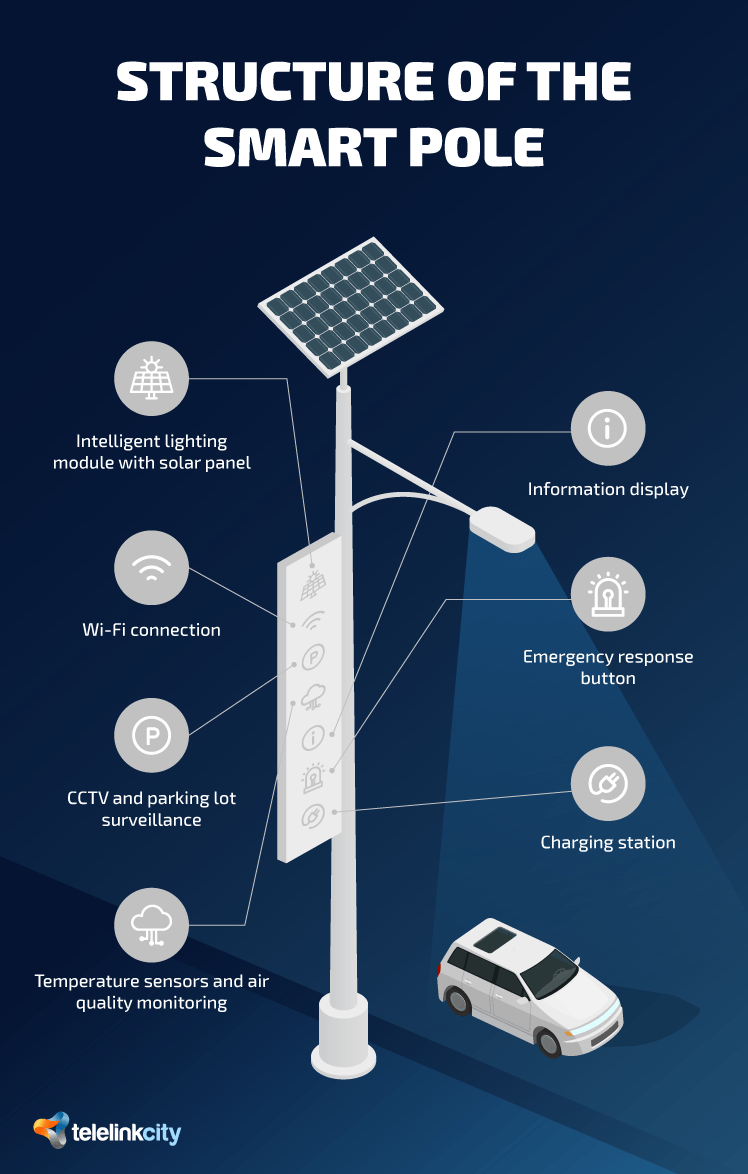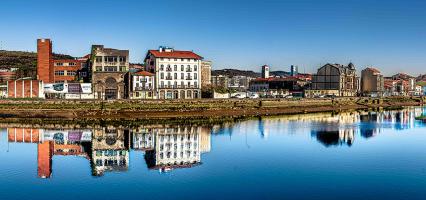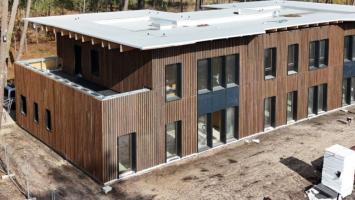Thessaloniki gets ready for its metro launch in November
The underground rapid transit lines have been under construction for almost two decades due to various project delays
 TheMayor.EU logo
TheMayor.EU logo 
Discover the benefits of smart lighting poles for the smart development of cities
What if city lighting poles could serve not one but ten functions? What if a single lighting pole could incorporate connectivity modules, a charging station, air quality sensor, traffic management sensor, CCTV camera, information board, an emergency communications centre?
This is not some high-tech utopia, it’s already a reality!! With smart lighting poles already being incorporated across the globe and with 5G on its way, very soon we’ll be able to speak of real intelligent cities. Today, we’ll give you a virtual tour of the amazing tech development called smart lighting poles – follow us!
The need for automatation was what laid the foundation of smart poles. Companies that sold and maintained city lighting infrastructure needed a way to automate different tasks on a scale so that they could cut operational costs and improve efficiency.
They needed a system that could respond to changing conditions such as light and fog. In time, they figured out that lighting sensors are not the only thing that can be installed on a pole. Thus, the smart lighting pole was born from the dreams of people who could see beyond primary function. But then for an ecosystem to work, the question of connectivity entered high on the priority list.
5G is already marching proudly to markets worldwide. It not only allows people to browse faster but makes infrastructural improvements that previously seemed impossible look like a walk in the park.
Faster connections translate into better connectivity between the different structures in a city’s management system. The benefits areinteroperability and automated manual tasks, as well savings on the cost of resources.
Just imagine the possibility of simultaneously adjusting traffic management systems, bus schedules, and parking availability based on data received in real time from lighting post sensors? Or, in case of an accident, an SOS button and smart CCTV monitoring can enable the timely dispatch of all necessary services in a matter of minutes, potentially saving lives.
It’s all possible due to the higher connectivity speeds and smart algorithms that can be created based on real-time data from sensors.
If connectivity can be described as the beating heart of a smart pole ecosystem, sensors are its nervous system. They collect and direct data towards the brain (or brains) that analyze it and transform it into reports or direct commands to optimise the system’s workflow.
Sensors allow for the Internet of Things to function effortlessly; they create the signals that form a map of potential improvements – from traffic lights management to air quality. In this way, different automated rules can be applied to different segments of the city’s infrastructure in the blink of an eye.
 The structure of a smart pole
The structure of a smart pole
Traffic is one of the main pain points in big cities. IoT sensors can count and classify vehicles, and monitor the overall traffic flow, providing valuable data.
Based on this data, traffic lights operators can optimize the system for both vehicles and pedestrians. Sets of automated rules can be applied to create a dynamically controlled traffic ecosystem that responds to different challenges in real time.
Incorporating a robust parking strategy is necessary, especially in city centres. Sensors mounted on lighting poles can monitor for parking vacancies and inform people where the nearest parking spot is via a mobile app, for example. The same system can be used for the payment of parking fees (and imposing fines when necessary).
Air pollution decreases the quality of life in cities both directly and indirectly. Therefore, municipal authorities around the world are looking for urgent solutions to this public health issue.
The first step is to create a map of the problematic areas, as well as a picture of which pollutants are at play. With this information in hand, mayors can address the issue more adequately.
A smart pole can help decrease response times of emergency services in two ways. The first is an SOS button – a quick and effortless solution for people who have witnessed an accident to report it. CCTV monitoring is then used by the emergency response centre so that they can direct the most adequate services as soon as possible.
Another way in which people can connect with the emergency response centre is by calling a direct SOS line from a digital screen on the pole. Cutting response times are crucial to saving lives.
CCTV has long been used to improve safety in the streets of big cities. What smart poles add to the equation is a massive network of CCTV placements that covers more angles and is far more difficult to vandalise. The footage from these cameras can be used as evidence in court in some countries.
Last but not least, smart poles can be used by municipal authorities as a quick communication channel. If a pole is equipped with a touch screen, it can even serve as a hub for bilateral communication – for example, surveys, questionnaires, ideas for improvement. These can help create a better environment for digital citizenship to thrive.
A smart pole can incorporate all of these, and even more sensors, but that doesn’t mean that it has to. Every city has its own problems to solve, and the beauty of smart poles is that they’re highly customisable. Cities can decide what their priorities are and later add to the portfolio of smart sensors that they have installed.
Smart lighting poles can be the first step towards creating a smart ecosystem in any city – one based on reliable, real-time data. In the 21st century cities no longer need to play the second-guessing game. They can provide their citizens with better solutions in less time, with less effort and with fewer resources. And isn’t that one very bright idea?
Telelink City can partner with global and local institutions to efficiently integrate this innovation in your city.
Contact us:
Website: telelink-city.com
E-mail: telelink-city@telelink.com
This article was originally published on: https://telelink-city.com/smart-poles-smart-solutions/
TheMayor.EU stands against fake news and disinformation. If you encounter such texts and materials online, contact us at info@themayor.eu

The underground rapid transit lines have been under construction for almost two decades due to various project delays

Now you can get your wine in Talence by paying directly in Bitcoin

That’s because the state has to spend money on updating the railway infrastructure rather than subsidizing the cost of the popular pass

Rethinking renewable energy sources for the urban landscape

The examples, compiled by Beyond Fossil Fuels, can inform and inspire communities and entrepreneurs that still feel trepidation at the prospect of energy transition

Now you can get your wine in Talence by paying directly in Bitcoin

The 10th European Conference on Sustainable Cities and Towns (ESCT) sets the stage for stronger cooperation between the EU, national and local level to fast track Europe's transition to climate neutrality.

At least, that’s the promise made by the mayor of Paris, Anne Hidalgo

The underground rapid transit lines have been under construction for almost two decades due to various project delays

At least, that’s the promise made by the mayor of Paris, Anne Hidalgo

Hostal de Pinós is located in the geographical centre of the autonomous region

Despite its church-y name, the district has long been known as the hangout spot for the artsy crowds

Urban dwellers across the EU are having a say in making their surroundings friendlier to people and the environment.

Forests in the EU can help green the European construction industry and bolster a continent-wide push for architectural improvements.

Apply by 10 November and do your part for the transformation of European public spaces

An interview with the Mayor of a Polish city that seeks to reinvent itself

An interview with the newly elected ICLEI President and Mayor of Malmö

A conversation with the Mayor of Lisbon about the spirit and dimensions of innovation present in the Portuguese capital














